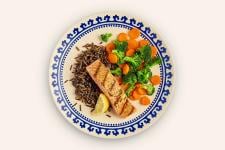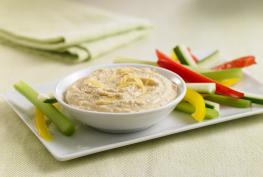Choosing foods with healthy fats can help lower your risk of heart disease.
On this page
Benefits of choosing foods with healthy fats
Choosing foods that contain mostly healthy fats instead of foods that contain mostly saturated fat can help lower your risk of heart disease. Heart disease is 1 of the leading causes of death in Canada.
The type of fat you eat over time is more important for health than the total amount of fat you eat.
Foods containing healthy fats
These foods contain healthy fats:
- nuts
- seeds
- avocado
- fatty fish
- vegetable oils
- soft margarine
- soybeans and soy products, such as tofu
Foods containing saturated fat
These foods contain saturated fat:
- fatty meats
- high fat dairy products
- some highly processed foods
- some tropical oils such as palm oil and coconut oil
How to choose food with healthy fats
The type of fat you include in your eating pattern matters. Here are some ideas to eat more healthy fats and less saturated fat.
Choose foods with healthy fats
Try different types of fatty fish such as:
- trout
- salmon
- herring
- sardines
- mackerel
- arctic char
When preparing foods, use oils with healthy fats, such as:
- olive
- canola
- peanut
- sesame
- soybean
- flaxseed
- sunflower
Ideas for meals and snacks
Include small amounts of nuts as a snack.
Try nut butters such as peanut, almond or walnut.
Add humus or avocado to sandwiches and dips.
Include fatty fish such as canned salmon in sandwiches and wraps.
Try pumpkin or sunflower seeds. Toast them for a snack or add them to salads.
Make your own salad dressing with canola, olive or flaxseed oil. Add balsamic, rice wine or other vinegars. Flavour with lemon juice, dry or Dijon mustard, garlic and herbs.
Limit foods that contain saturated fat
Limit the amount of foods containing saturated fat, such as:
- processed meats
- canned coconut milk or cream
- some frozen desserts like ice cream
- bakery products such as cookies and cakes
- most deep fried foods, like French fries
- candy bars, chocolate and chocolate coated treats
When preparing foods, try to limit the amount of saturated oils and fats like:
- lard
- ghee
- butter
- palm oil
- coconut oil
- hard margarine
Choose lean cuts of meat and skinless poultry. Trim off as much of the visible fat as possible. Drain fat from cooked ground meat. Lean or extra lean cuts of meat can include:
- pork loin
- chicken breast
- sirloin roast or steak
- inside and outside round roast
- lean ground poultry
- wild game such as:
- deer
- bison
- moose
- caribou
Some processed foods are made with ingredients that are high in saturated fat. Use the food labels to compare products. Choose those with little to no added saturated fat.
Healthy fat swaps
Try these swaps to replace saturated fat with healthy fats:
- On your toast, replace cream cheese with nut butters.
- For dipping, try making your own hummus to replace spinach or artichoke dip.
- On bread or rolls, replace butter with olive oil flavoured with balsamic vinegar.
- When you are cooking, replace shortening, lard or hard margarine with oils with healthy fats such as canola, olive and soybean.
Reduce the amount of saturated fat in your meals by choosing:
- leaner cuts of meat like sirloin instead of higher fat meats like rib eye steak
- lower fat dairy products like lower fat milk instead of higher fat dairly products like cream
- protein foods with healthy fats like fish and shellfish instead of higher fat meats
Make a healthy choice
What you eat on a regular basis matters for your health.
- Choose foods that have little to no added sodium, sugars or saturated fat.
- Compare the nutrition facts table on foods to choose products that are lower in sodium, sugars or saturated fat.
- Date modified:


